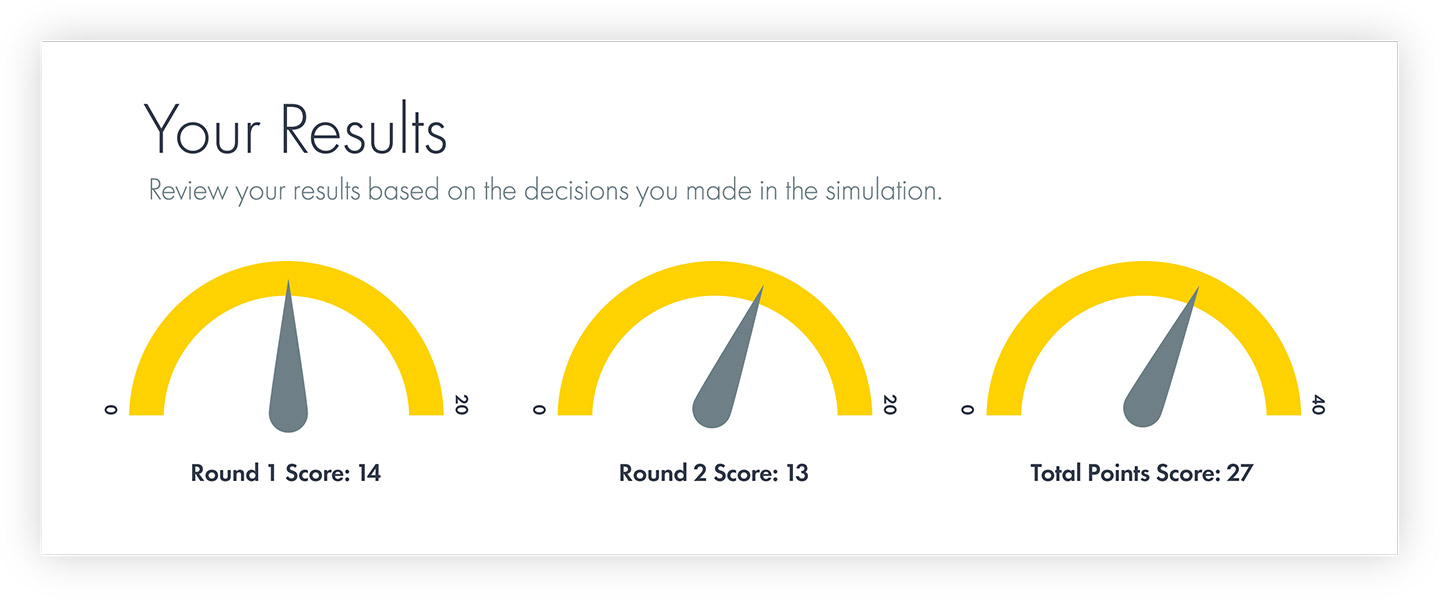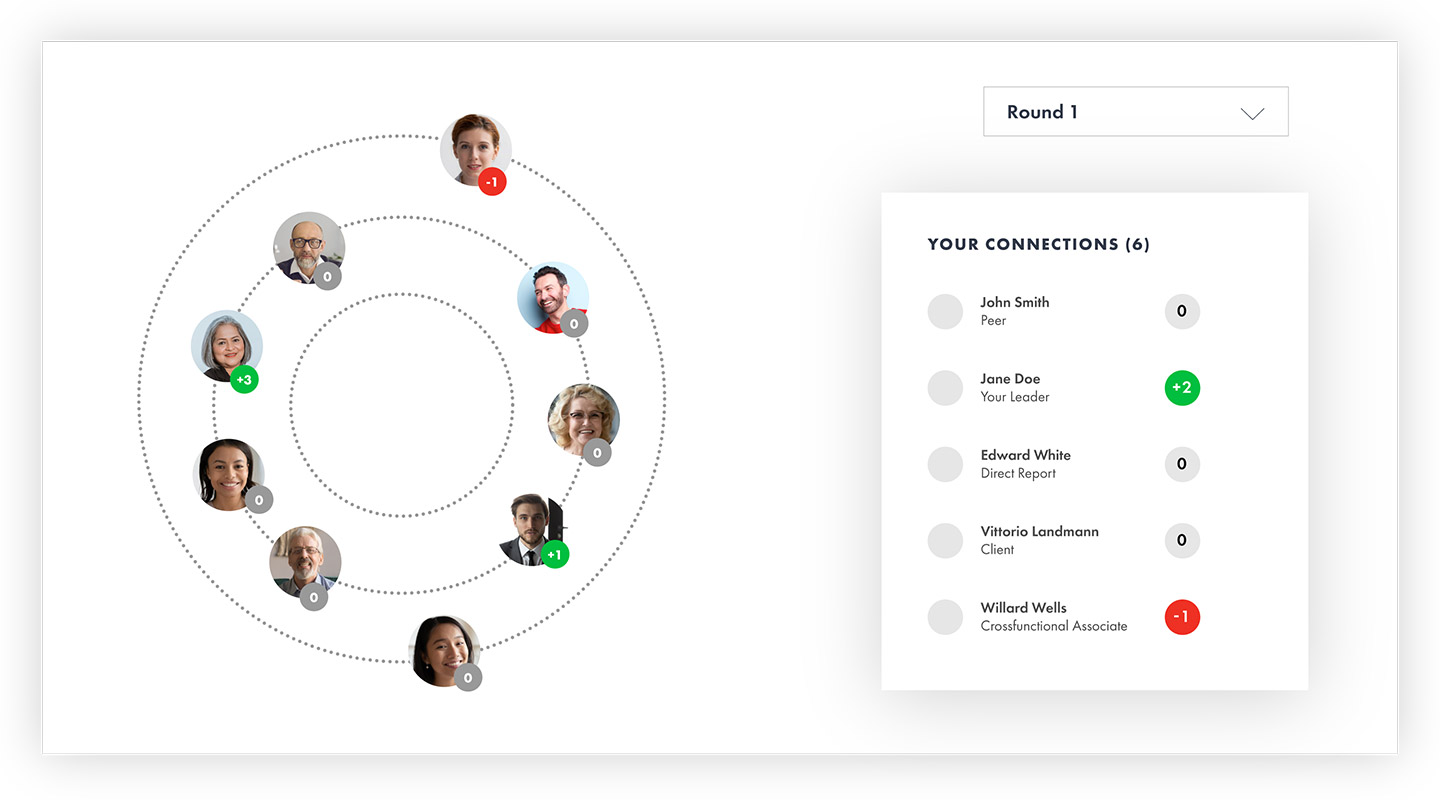Business success depends on people learning and doing more, faster. With learning leaders focused on upskilling and retention, our simulation-based immersive learning solutions are used by Fortune 500 companies worldwide to create effective, engaging learning programs with measurable ROI.
A simulation is a program that allows learners to learn from their actions and decisions with low-risk outcomes. Through trial and error in a safe, no-risk environment, employees learn from their failures, refine their problem-solving abilities, and develop critical and system thinking skills. Most importantly, the employees learn how they can contribute to the business in far less time.
In this article, we’re talking about scoring: what it is, why it matters, and how to leverage the power of scoring in your own simulation-based learning programs.


